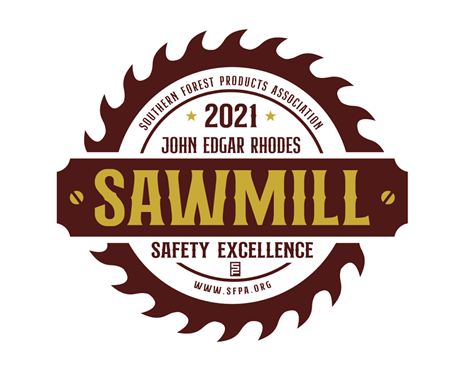The Southern Forest Products Association (SFPA) is pleased to announce the newly rebranded John Edgar Rhodes Sawmill Safety Excellence Award. The award embodies the impact, dedication and legacy of Rhodes, one of the lumber industry’s most revered and celebrated leaders.

Rhodes enjoyed a successful career woven of work in newspapers and forestry. In the late 1800s, Rhodes served as secretary of the Minnesota Logging Company and spent time as a writer for the Minneapolis Tribune. Rhodes took a position as secretary-manager of the Northern Pine Association in 1898 and became a personal secretary to Frederick Weyerhaeuser in 1908. In 1912, Rhodes became publisher and editor of the Tacoma Tribune, owned by Major Everett Griggs, head of the St. Paul & Tacoma Lumber Co. When the paper closed, Rhodes was appointed secretary-manager of the National Lumber Manufacturers’ Association. He then moved to the Southern Pine Association (SPA), serving as secretary-manager from 1915 until his untimely death from illness in 1923. Under Rhodes’ leadership, the SPA grew into the model trade association in American industry. He forged industry-wide partnerships still honored today and set the strategic direction of the SPA. In 1970, the SPA officially became the SFPA we know today.
Recognized as one of the best-informed men in the lumber industry, Rhodes had a broad and accurate knowledge of virtually all phases, branches and conditions in that business, and lumbermen and industry associations frequently sought his advice. Rhodes was known as a man of broad vision with a forward-looking attitude, and he was always mindful of the public’s interest in his handling of policy. For many years, Rhodes advocated for forestry and was one of the leaders in the forestry movement in the South, Minnesota and the Great Lakes states. The John Edgar Rhodes Sawmill Safety Excellence Awards honor this legacy and impact on the forestry industry.
John Edgar Rhodes Sawmill Safety Excellence Award recipients are selected based on information submitted regarding occupational injuries and illnesses as reported to OSHA using Form 300A, including the annual average number of employees, total hours worked, and total number of recordable cases. Safety performance is judged by how each mill’s safety record stacks up against facilities with comparable lumber output throughout the year. For more information, please reach out to Eric Gee.